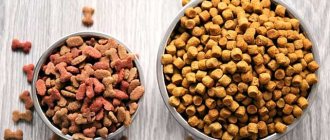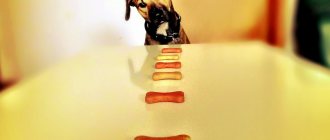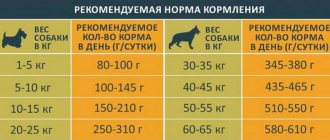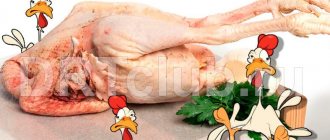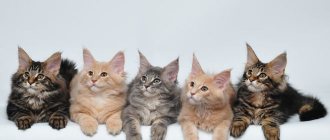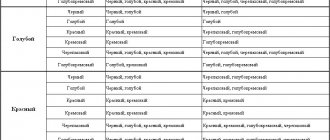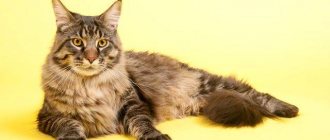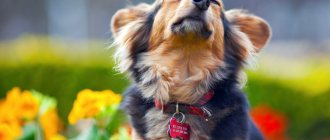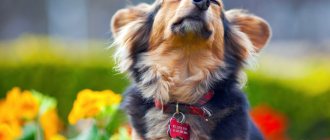The diet of this breed of domestic cat must be carefully selected by its owner. Below we will consider various diets, which, along with natural food, contain mixed nutrition and special premium nutritious food.
The creation of such diets is entirely aimed at the proper distribution of nutrition, which is the health and beauty of the cat.
Industrial food for Maine Coon
Ready-made food for Maine Coons has its own advantage: it has a long shelf life and saves people time preparing food for the cat.
There is no shortage of varieties of dry and wet cat food available today. They are available for all ages: they are intended for both small kittens and adults. It is selected for each cat individually.
In addition, there are special foods aimed at a certain direction, be it growth, weight gain, healthy coat, or treatment of internal physiological systems (for example, diuretic and digestive).
Maine Coons are very picky and delicate eaters. Ordinary standard food such as KITIKAT and WHISKAS are not suitable. Long-term stable feeding of these foods can bring many unpleasant consequences to the Maine Coon in the form of diseases.
It is recommended to use such types of super premium food as Royal Canin, Nutro or Hills. For large breeds of cats, according to owners and veterinarians, it is the products of the above-mentioned manufacturers that are most useful.
However, whatever the food, you should first consult with your veterinarian. After this, the owner himself chooses, not least taking into account his financial situation. For example, canned food differs in price from dry food. You can try combining them by feeding your cat wet food in the morning and using dry food for dinner, or vice versa.
Large kitties
5
I recommend
Virtues: Wisdom; mind; mobility; beauty; devotion; family; soulfulness.
Disadvantages: Long hair.
Review: The Maine Coon breed was developed about 150 years ago, but it is now that this breed has gained great popularity. This breed has many advantages, but it also has its disadvantages. The pluses include the fact that this breed of cats is very smart, I would even say wise, patient, loyal, etc. The minuses are still their size and long hair. During shedding, so much hair comes off that you can make a couple more cats from this wool. This breed needs to be looked after carefully, just like any pet... Read more
Dry food for Maine Coon
Dry food is a good solution for proper feeding of Maine Coons. Prolonged feeding of a cat with dry food helps the cat's body adapt to secrete the required amount of gastric juice. In the future, this will help establish the required level of metabolism and balance of water and salts.
Most owners believe that frequent feeding of this food causes problems with the urinary system, such as kidney stones. But it's all about nutrition standards. If the Maine Coon's food is provided depending on its size and weight, then such problems should not arise.
There are four classes of dry food:
- Holistic. Highly balanced nutrition with beneficial microelements.
- Super premium. Excellent professional type of food. It is he, based on the judgments of the owners of Man Coons, that is the best for this breed.
- Premium Good quality food with nutrients.
- Economy Unreliable food with low prices, causing symptoms such as tearing, shedding, etc.
Of course, the class of food is chosen only by the owner of the Manx cat, because only the taste of the food consumed is important to the animal.
Please note an important point: the indicated microelements almost always correspond to the amount mentioned on the packaging, however, the raw material base of such a product may be completely different!
Care and maintenance
The raccoon cat, or Maine Coon, requires special care. If we recall the description of its representatives, they have long hair, large sizes and a good appetite.
Maine Coon
Caring for a Maine Coon is not an easy task, so before you bring such a handsome dog into your home, you should think carefully about whether a person can devote a lot of time and effort to the animal.
This breed has a number of positive traits. These cats are smart, trainable, get along well even with small children, are clean and quickly adapt to the habits and behavior of their owner. The only drawback is the high maintenance requirements.
Basic conditions that must be met:
- Regular cleaning of the eyes from accumulated mucus. It appears even in a completely healthy animal;
- cleaning the ears. The area is quite delicate, so the procedure is carried out carefully so that the animal does not jerk and harm itself. Healthy and clean ears are pink in color, without foreign accumulations;
- the pet's long hair requires daily combing using a special comb;
- Claws should not be allowed to grow to too large a size. Otherwise, they will cause inconvenience to the pet.
Grooming
Feeding Maine Coon wet food
Canned or wet food has virtually no radical differences. But pet markets do business with them, distributing them into complete food and tasty delicacies. The main form of production of such food is pates and jellies. They, in turn, are divided into premium and economical products. Individuals of this breed are very fond of this food.
Premium food for Maine Coon
As mentioned above, the Manx cat needs only high quality food. The presence of a specific type of meat is mandatory; for nutritional value, the list of ingredients must contain mineral elements and fats.
Comment. There should be no preservatives, flavors or other artificial additives in premium quality products!
Dry and wet food of premium quality for Manx cats is produced by Royal Canin, EaglePack, Hills and some others.
The first and last manufacturers have a super premium reputation, as they produce their own medicinal products. In addition, these brands differ from others in their quality. It should be noted that high quality food is labeled PREMIUM or SUPERPREMIUM.
How to choose a kitten?
Follow several important rules when choosing:
To avoid mistakes, you should familiarize yourself with the standards of this breed. Study versions of different felinological systems. Buy kittens only from nurseries. This breed is quite expensive. If you are offered an animal at a low price, this should raise suspicion. The kitten is ready to go to a new home at the age of 12 weeks. At the nursery, ask to see the father or mother
If you receive a refusal, this is another reason to doubt the honesty of the breeder. Pay attention to whether the kitten has the characteristic features of the breed. He should have large paws, tassels on his ears, a curved transition from forehead to nose, and a large chin.
Kittens must have breed characteristics and a healthy appearance
Natural food for Maine Coon cats
Natural food does not mean everything that the owner himself eats and feeds his pet with the same. Homemade meals are not really suitable for this breed and can be harmful to your cat.
See also - what to feed a Maine Coon using natural food?
Therefore, before you start feeding, you should definitely familiarize yourself with the foods allowed in the diet. The Maine Coon takes very well to boiled chicken and all dishes associated with it, especially breast and neck.
You can also eat beef. But duck and pork meat should not be added to the diet, as they put stress on the liver. Canned meat products, stewed meats and various smoked foods are prohibited. Among the delicacies, you can pamper your cat with boiled liver.
Fermented milk products, especially milk, are extremely beneficial for kittens (see also proper nutrition for Maine Coon kittens). Actually, this applies to all breeds. But over time, when the Manx cat becomes older, milk is no longer recommended for constant consumption, as it causes problems with stool. Therefore, it should be eliminated from the diet of an adult cat. You can give them milk derivatives such as yogurt and kefir, but also in limited quantities.
As for seafood, everything is ambiguous here too. It is not recommended to give raw fish, especially capelin. It becomes a source of worms in Maine Coons. It is also better not to give boiled fish.
But you can treat your cat with boiled squid or shrimp, you just need to make sure that they are cooked without the use of spices, even excluding salt.
It is not advisable to include chicken egg whites in the diet of a purebred cat. But as for the yolks, they are even desirable for the Maine Coon. They strengthen the immune system and improve the condition of the cat's coat.
Several times a week, a purebred giant can be given such a delicacy as quail eggs. Many vegetables and fruits contain some starch. Such vegetables and fruits go well with other foods. They are well accepted by the breed if you occasionally add them to the food (such food is not suitable for regular food). They are ground and mixed with other food.
However, the Manx cat’s diet can be diluted with various cereals. Among the acceptable ones are rice, oatmeal and buckwheat porridge. But you should not regularly give your coon porridge, as the breed grows to large sizes and therefore needs healthy food.
Owners who know a lot about keeping Maines already prepare porridges themselves, which contain all the elements that contribute to their healthy development.
Please note that greenery is no less important to your pet than water, so it must be placed in a place accessible to him.
If the owner decides to feed his pet natural food, then he must remember that choosing the correct consistency of the necessary substances himself is quite problematic. In addition, the cat's food should contain vitamins and minerals. CANINA also produces such food.
The highest quality vitamin food for maines:
- "Top 10", published by Canina. Kangidrox (Canina) and Calcidee feeds containing calcium and phosphorus (8in1) help strengthen bones and joints.
- Beautiful wool will be provided by “Brewers” (8in1) and “Cat feel OK” (Canina) food.
All vitamin supplements should be stored in tightly closed containers out of reach of the animal.
Maintenance and care
In order for the pet to feel comfortable, it needs to be provided with a territory sufficient for its size and provided with everything necessary for everyday cat life. Essential items include:
- Little house. You can make it yourself or buy it in a store. The best option would be a multifunctional complex, including a booth, a bench and several observation platforms installed at different heights.
- Carrying. A necessary item for trips to the veterinarian and traveling any distance.
- Scratching post. Can be purchased separately or as part of a gaming complex.
- Utensils for eating and drinking. It must be of a suitable volume and weight so that the pet cannot knock it over. For greater convenience, you can install an automatic drinking bowl.
- Toilet tray. When choosing this item, you must take into account the size of the animal. For safety reasons, it is recommended to use natural filler.
To care for a Maine Coon you will need special tools and equipment:
- Several types of combs: with rare movable teeth, frequent metal teeth, a brush with natural bristles.
- Furminator is a device designed to remove dead fur. It is recommended to use both during the period of shedding and in its absence to improve the quality of the coat.
- A nail clipper is a device for regularly trimming claws.
- Cat toothbrush and toothpaste.
- Shampoo with conditioner for long-haired breeds.
Regular brushing
The procedure should be carried out 1-2 times a week. More frequent grooming may be required during shedding. First, the coat is combed with a sparse comb, and only then a comb with thick teeth is used. Individual areas of the body are processed in the following sequence:
- tail;
- back;
- side zones;
- breast;
- "pants";
- stomach.
The resulting tangles must be disassembled by hand or carefully cut with scissors.
Water treatments
Maine Coons, like other cats, do not need frequent bathing. The animal should be washed on the eve of the exhibition or if it is heavily soiled.
Before bathing, your pet's ears must be protected with cotton balls. It is recommended to place a rubber mat at the bottom of the bathtub to prevent the cat's paws from slipping.
The patient should be bathed in warm water, the temperature of which does not exceed 38°C. It is advisable to use shampoo with conditioner designed for long-haired breeds.
If your pet flatly refuses water treatments, you can clean the animal’s coat with dry shampoo.
Grooming is not for the Maine Coon
According to experts, the Maine Coon's coat is not intended for grooming. Firstly, a “fashionable” haircut does not suit a descendant of Aboriginal people. Secondly, the highlight of the breed - its wild charm can be lost forever.
Already after the first use of cutting devices, the structure of the coat is disrupted. The fur coat irreversibly loses its smooth guard hair. All that remains is fluff, reminiscent of cotton wool.
In Maine Coons, as an exception, it is allowed to trim the hair in the groin area and under the tail. Such intervention is justified by hygienic purposes and does not disturb the exterior. You can carry out this procedure yourself or seek help from a specialist.
Mixed nutrition
The main thing in a mixed diet should be dry commercial food; natural food is added to it, which serves as additional food. The meat content during mixed feeding should not be more than 20%, otherwise the animal will require only this product.
Then the owner will have no choice but to switch to natural food and calculate the proportions of the necessary substances himself, or completely switch the cat to industrial food.
Description of the breed, character and habits
The breed belongs to the group of semi-long-haired cats. There are many versions regarding its origin. According to one legend, these animals arose as a result of intercourse between a cat and a female raccoon, from which Maine Coons inherited their unusual size and striped tail. The second version indicates that these pets appeared after intercourse with the North American lynx. However, both stories are nothing more than fiction, since it is impossible to obtain offspring as a result of interspecific crossing.
The truth is that Maine Coons are the natural population of the cat metropolis. The peculiarities of formation were determined by nature, which made the animals physically large and hardy in order to survive in the harsh winter conditions.
Indeed, the peculiarity of these cats is their size. An adult cat reaches a weight of 10–15, and a female – 6–8 kg. They develop slowly, reaching maturity by 4–5 years.
Maine Coons are very easy to care for, despite their gigantic size.
The animal's head is trapezoidal in shape, slightly narrowed in width and elongated in length, and the profile is slightly curved. The ears are set high, with tufts at the top. The body is muscular, reaches a length of 1.2 m. The neck is of medium length, the chest is wide. The limbs are large and muscular. There are tufts of wool between the toes on the paws. The size of the tail corresponds to 2/3 of the body length. The eyes are oval shaped. Their color can be green, golden, amber, yellow.
The coat is thick and silky. It consists of two layers: the first of them provides protection from cold, the second from moisture. The areas on the belly, back, collar area and sides are covered with the longest hair. The color can be varied. Only chocolate, lilac and fawn colors do not meet the standards. The lifespan of Maine Coons is 12–20 years.
Cats are calm, balanced and attached to their owner
In addition to their external appearance, an attractive feature of cats is their friendly nature and high level of intelligence. These animals have the ability to remember words and distinguish intonation, making them easy to train. They don’t really like to lie on their owner’s lap (with rare exceptions). But they prefer to spend time next to him. The Maine Coon can follow its owner wherever he goes.
As children, they have a playful character. But adult cats are calm and reserved. Animals do not immediately trust people. It will take some time to establish contact with them. It won't be difficult to train them to walk on a leash.
An amazing fact is the peculiarity of their voice. When meowing, these giant cats make a very thin sound, which introduces a certain imbalance with the impressive appearance of the animal.
Maine Coon diet
To determine the norms of daily nutrition, you need to know the weight of your pet. A useful ratio has been calculated: per kg of cat weight there are 60 kcal and 10 g of protein.
Based on a simple estimate, the average Maine needs more than 150 g of feed per day. If the animal is already an adult, then the daily norm should be doubled or more.
Before purchasing industrial food for your pet, veterinarians insist on a detailed study of the composition of the product. In the recommended version, 100 grams of food contain 350 kcal, 35% protein, 20% fat and at least 2.5% fiber. A cat should eat no more than 2-3 times daily. But kittens need to be fed in small portions 4-5 times a day.
About the breed
Maine Coons are also called American Coon Cats, probably because that's where they come from. This breed gained fame back in the 19th century, and since then it has been given the palm in popularity only once - to the fluffier Persians.
There was even a period when Maine Coons could have disappeared altogether as a species , but thanks to their impressive appearance and excellent hunting abilities, they managed not only to survive, but also to take first places at exhibitions.
Today, the Maine Coon is one of the most popular breeds. And it’s not just their unusual appearance – these cats have an unusually kind character. The formidable beast is actually more similar in character to a plush toy: it will never scratch you and can’t even meow loudly.
In terms of care, only the claws and fur require special attention, but the food ration is quite simple for adults; with babies you will have to tinker.
As you can see, feeding your pet is quite a troublesome task, and requires from the Maine Coon owner not only attentiveness and patience, but also quite large financial expenses. Professional food is not so cheap, but it is better to spend money and have a beautiful, healthy cat in your home, whose fur will be soft and silky, whose health is normal, and whose mood is always high.
If you want him to grow up big and beautiful, take care of your Maine Coon like a member of the family, and he will reciprocate.
But in everything you need to know when to stop. It’s better to find out in advance how many times to feed, especially for a small kitten, since too much weight gain is also not good. Animals can also become obese, and this is just as bad as it is for humans.
Manx cat diet
Let's give the approximate amount of daily food for a Maine Coon (per 1 kg of weight).
According to the first option, lean meat should be about 113 grams, boiled rice - 35 grams. Add 3 teaspoons of vegetable puree with vitamin supplements to this dish.
According to the second option, the coon should be given 2-3 pieces of quail yolk, 30 grams of cottage cheese. Add here up to 150 g of boiled beef meat, and again with the addition of vitamins and minerals.
A properly groomed and fed raccoon cat is active, enthusiastic, and looks quite well-fed in appearance. There is a direct relationship between the nutrients that are in a cat’s daily diet and its beauty.
Menu for kittens
The rules for creating a menu for kittens depend on the age of the animals. At first, pets eat only mother's milk, then they are gradually transferred to adult food.
First month
Until 3-4 weeks, the kitten should eat exclusively mother's milk. If for some reason the cat cannot feed the babies, it is recommended to purchase special substitutes. The most popular products of this type are Beaphar Kitty Milk and Babycat Milk Royal Canin. The proportion of milk sugar in them is minimized, therefore reducing the likelihood of developing individual intolerance and diarrhea.
Substitutes are better than cow's milk due to their adapted composition: the concentration of lactose in them is lower, which makes them safer
It is advisable to dilute the cat's milk replacer with more water than indicated in the instructions. This will help avoid constipation.
As a last resort, feeding with formulas based on cow's milk is allowed. Due to the high proportion of lactose in the product, the kitten may experience diarrhea. If diarrhea occurs, it is important to quickly contact a veterinarian, because as a result of fluid loss, babies quickly become dehydrated.
The universal mixture is prepared from 500 ml of milk, 1 raw egg yolk and 2 tbsp. l. Sahara. To enrich the product with useful substances, you can add 1 tsp. corn oil and the contents of 1-2 capsules of vitamin E. Weak kittens are given a mixture of 100 ml of milk (3.2% fat), 1 chicken yolk and 20 ml of 5% glucose solution. For digestive problems, add the probiotic Vetom 1.1 at the tip of a knife.
The egg in the mixture helps increase the proportion of fats, B vitamins and minerals
In young kittens, the thermoregulation system is not fully developed, so it is important to warm the mixture. At 1 week, the liquid temperature should be +38…+39 °C. In the second week, the mixture is heated to +30…+32 °C. Later the temperature is lowered to +28…+30 °C. By the fourth week, the mixture is heated only to +24…+26 °C.
Diluted milk should be stored in the refrigerator for no more than a day. It is recommended to prepare a new portion before each feeding.
The amount of food and frequency of feedings depend on the age and weight of the kitten.
Table: individual food allowance for Maine Coons
| A week | Amount of food | Schedule and features |
| First | From 1 to 4 days 30 ml per 100 g of weight | In the first 2 days, kittens are fed every 2 hours, including at night. From day 3, the break between night snacks is increased to 3 hours. From day 5, kittens are fed every 4 hours. |
| Second | From 5 to 13 days 38 ml per 100 g of weight | Kittens are fed every 4 hours. From the 15th day it is allowed to introduce complementary foods. At the same time, it is recommended to gradually accustom the animals to bowls and saucers. At first, you can let your pets lap from spoons. |
| Third | From 14 to 24 days 46 ml per 100 g of weight | The frequency of meals is the same. |
| Fourth | From day 24 53 ml per 100 g of weight | Kittens are fed every 4 hours. From 3–4 weeks, other products must be introduced into the menu. |
From 1 to 6 months
Complementary foods are introduced into the diet in order to transition to adult food. Changes must be made gradually. Kittens have very sensitive digestion, so a sudden transition can provoke diarrhea and the development of pancreatitis. You can use baby cottage cheese without additives as your first complementary food. It is allowed to be given every day.
The classic Tema curd is suitable for small kittens: it does not contain additives and has a fairly soft consistency.
Meat is gradually being introduced into the menu. First, the animals are given a staple—separate whole fibers. The size of the first portion should not exceed a pea, then it is gradually increased to the volume of a chicken egg. The meat is given raw, but it is well frozen beforehand. This is necessary to eliminate potential pathogens and parasites. Meat is given every day. Chicken, turkey and beef are suitable for complementary feeding.
Kittens should not be given minced meat. This is due to its texture: there is no fiber in it, so it is more difficult for the predator’s body to digest the delicacy.
You can use oatmeal without additives as complementary foods. It must be liquid, otherwise constipation may develop. Porridge can be cooked with milk. After getting used to meat, once a week you can offer the kittens low-fat sea fish. Cod, capelin, hake and pollock are suitable. 1–2 times a week, animals are given chicken yolk and soft unsalted cheese.
Oatmeal is used as a source of fiber, but it should not be the basis of the diet: it does not contain animal proteins, which are necessary for the final formation of internal organs
Kittens are taught to eat vegetables from childhood. From 3-4 weeks you can give zucchini, broccoli, cauliflower and carrots. Animals rarely eat raw vegetables, so it is recommended to boil the food, chop it with a blender or grater and mix it with meat.
New products are introduced into the menu gradually, 1 every 1–2 days. This is associated not only with the risk of digestive disorders, but also with the likelihood of developing allergies.
Until 6 weeks, complementary foods should have a liquid consistency. Then the pet is gradually transferred to solid food and abandoned cereals. The process should be completed at 3 months, because at this time the change of teeth begins. To form the correct bite, the kitten must chew hard foods. From 6–8 weeks, you can begin to switch your pet from natural food to ready-made wet or dry diets. In the latter case, the granules are first soaked.
The granules must be soaked only in warm water, otherwise the process will take 30–40 minutes
When feeding natural products, the average norm is 150 g of food per 1 kg of kitten weight. In the case of ready-made diets, it is advisable to follow the manufacturer’s recommendations and observe the animal’s physique. Kittens are not able to independently regulate portion sizes, so to prevent overeating, the daily intake is divided into 5-6 parts. After 3 months, kittens can be fed 3-4 times a day.
It is not recommended to give kittens food for adult animals. It contains less fat, calories, vitamins (A, group B, E) and minerals (calcium, magnesium, potassium, etc.), which can lead to improper formation of internal organs and systems. Although I personally gave my kitten the Grandorf holistic food and there were no problems. But this may be due to the versatility of the formula and its proximity to the natural diet.
From 6 months to 1 year
Grown-up kittens are fed the same as at 3–4 months, but are transferred to three meals a day. With a natural menu, 80–85% of the diet should consist of meat products. Kittens require a lot of protein to form muscle fibers. Dishes are not chopped as thoroughly as before. Animals begin to be given harder parts: cartilage, hearts, lungs, etc.
The granules of food for kittens must be round, otherwise the animal will be in pain, which will provoke a refusal to eat.
When eating ready-made diets, the menu in most cases does not change. Manufacturers most often produce products for kittens from 2 to 12 months. Only the portion size is adjusted depending on the weight and build of the pet.
Reproduction and its prevention
Let's look at the peculiarities of pregnancy in Maine Coon cats. As well as methods for preventing it if the owner does not plan to engage in breeding.
Pregnancy and childbirth
Pregnancy is an important stage in a cat’s life.
A cat’s pregnancy can be detected 20 days after mating. Her nipples become enlarged and turn a bright pink color. Habits often change. Hormonal changes can provoke toxicosis. Pregnancy lasts 65–67 days. But deviations are also possible. If babies are born before 60 days, they appear weak and often not viable. During this period, contact with other animals is undesirable for the cat. They can be carriers of infections.
Two weeks before the due date, arrange a place for the cat and lay out a clean diaper. From day 62, monitor her constantly.
- The first sign of labor is the passage of the plug. It resembles mucus. After this, the kitten may appear in a few hours or days.
- Before contractions, the cat's body temperature drops to 37°C.
- If she begins to show anxiety or hides in a corner, then this indicates the beginning of the process. Place the cat in the prepared area. The newborn kitten will be in a bubble. The placenta will come out next. If this does not happen, you need to pull it out by the umbilical cord.
- A large kitten may get stuck. You need to take a clean rag, grab it and pull it lightly. But you should not grab the paws or tail, so as not to injure the baby.
- When the kitten comes out, tear the film near the mouth. The bubble will be removed from his head. We cut the umbilical cord at a distance of 2 cm from the tummy. It cannot be tied. Give the baby to the cat. If the kitten doesn't lick it right away, wipe its mouth with a napkin and make sure it can breathe.
Castration and sterilization
Cats are capable of producing offspring at the age of 8–10 months. Therefore, if you are purchasing an animal not for breeding, you need to take appropriate measures. Cats undergo castration - removal of the testes. Females are sterilized. This operation is carried out in several ways. A cat may have her ovaries, her uterus and ovaries removed, or just her uterus. The duration of the procedure is 5–7 minutes for males and 10–20 minutes for females. After 10–12 days, the stitches are removed. They do not overlap males at all.
The need for such manipulations is due to the presence of a reproductive instinct in cats. Failure to satisfy this need causes animal suffering, restless behavior and illness. The cat will roll on the floor and scream both day and night. To withstand such a test, strong nerves are required. The cat will begin to mark its territory.
Nutritional features depending on the circumstances
When preparing a diet for your pet, the following factors should be taken into account:
- age of the animal;
- health status;
- history of sterilization (castration) operations;
- for cats – bearing and feeding offspring.
Age factor
The composition and quantity of feed, diet must be adjusted in accordance with age needs. A growing organism needs “building” material, the source of which is food and vitamin and mineral supplements.
Up to 4 months, a Maine Coon kitten should be fed small portions 5-6 times a day. Gradually, the number of feedings decreases and by 12 months the growing baby switches to 2 meals a day.
By this time, the composition of the feed should also change. A mature body does not experience the same needs as during the period of growth.
Therefore, you should not offer a mature cat food intended for kittens, and babies should not be fed “adult” food.
Nutrition during illness
Despite the fact that representatives of the breed are distinguished by their strong physique and endurance, they may experience health problems due to unfortunate heredity.
The table shows diseases characteristic of the Maine Coon breed:
| Disease | Recommendations for treatment and prevention |
| Urolithiasis disease | To prevent the disease, it is necessary to exclude fish and economy-class food from the diet, and ensure an optimal drinking regime. For therapeutic and preventive purposes, veterinary foods from the Urinary series (Royal Canin Urinary S/O, Purina Pro Plan Urinary, Eukanuba Veterinary Diets Urinary Oxalate) should be used. |
| Joint pathology | For the purpose of prevention, preference should be given to high-quality feed, which includes the medicinal substances chondroitin and glucosamine. To treat the disease, in case of obesity with increased stress on the joints, the pet should be switched to veterinary feed products (Eukanuba Veterinary Diets Urinary Struvite for Cats Dry, Hill's Feline j/d.) |
| Hypertrophic cardiomyopathy | The animal must be under the supervision of a veterinarian. It is recommended to reduce the amount of salt in the diet. |
Feeding castrated (sterilized) animals
The composition of the feed and diet for castrated (sterilized) individuals should be selected in such a way as to minimize the likelihood of obesity. To prevent urolithiasis, it is necessary to choose feed with a reduced content of phosphorus and magnesium.
The volume of liquid drunk should be 3 times the amount of dry food eaten. In case of insufficient consumption, the following methods can be taken:
- offer food soaked in water;
- switch partially or completely to wet food;
- switch your pet to home-cooked meals.
Nutrition for pregnant and lactating cats
If the expectant mother is accustomed to eating ready-made food, she should not be switched to natural food. In this case it is necessary:
- switch to special super-premium food for pregnant and lactating cats;
- introduce kitten food (dry and wet) into the diet.
If your cat ate natural foods before pregnancy, you need to adjust its menu. The following products should be excluded:
- fish (increases the load on the kidneys);
- vegetables that can cause intestinal disorders (cabbage, beets);
- products containing spices.
Milk must be included in the diet.
In the first trimester, the cat should be fed 2 times a day. In the middle of pregnancy - 3 times, increasing the daily norm by 50%. On the eve of birth, feeding should be frequent (5-6 times a day) using small portions.
With a natural diet, pregnant and lactating cats need special vitamin and mineral supplements. Any drug must be prescribed by a veterinarian.
A nursing cat is also given fractional meals, thanks to which it is possible to avoid additional stress on the body. During lactation, the animal must consume large amounts of fluid. In addition to water, you can offer your cat milk and low-fat broth.
Castration and sterilization
The female Maine Coon is ready to breed at a fairly early age - sometimes as early as 8 months. An unsatisfied instinct makes the animal suffer, it can even get sick, but in general, in this breed the desire to reproduce is expressed by rolling on the floor and loud screams. It’s a little easier with cats - they simply mark their territory, which, however, is also unlikely to please the owners. If keeping a pet in your home does not involve mating, it is better to immediately take measures to allow the animal to forget about instinct.
With cats, the situation is a little simpler, since castration, that is, removal of the testes, takes only 5-7 minutes, and does not even involve stitches. For a cat, the procedure can take on different scales - she may have either her uterus or ovaries removed, or both, because of this, the duration of the operation can vary markedly, ranging from 10 to 20 minutes. Since such an intervention is a priori more complex, sutures are mandatory; after one and a half to two weeks you will need to visit the veterinarian again to have them removed.
